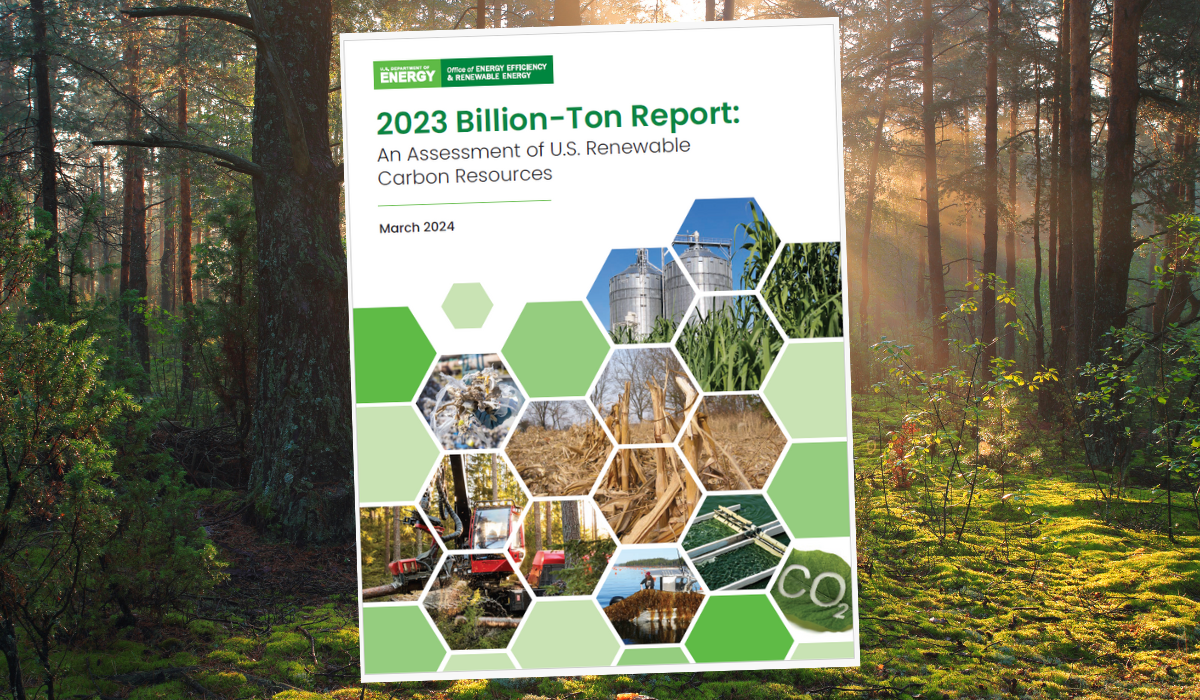
U.S. could sustainably triple biomass production to more than one billion tons annually: DOE
March 26, 2024
By Canadian Biomass Staff

The United States could sustainably triple its production of biomass to more than one billion tons per year, according to a new report from the U.S. Department of Energy (DOE).
The 2023 Billion-Ton Report (BT23) — the fourth in a series of assessments of potential biomass resources in the United States since 2005 — finds that 1 billion tons of biomass could satisfy more than 100 per cent of the projected demand for airplane fuel in the country, allowing the U.S. to fully decarbonize the aviation industry with sustainable aviation fuel (SAF).
Advancing clean energy solutions like biomass is critical to reaching long-term national decarbonization objectives and a key component of President Biden’s Investing in America agenda to deliver new economic opportunities across the nation while tackling the climate crisis, according to a press release issued by DOE.
“President Biden is dedicated to building a thriving bioeconomy that benefits all Americans and ensures everyone from farmers and scientists to healthcare professionals and engineers can play a leading role in our clean energy future,” said U.S. Secretary of Energy Jennifer M. Granholm. “The Billion-Ton Report shows that America is poised to lead the world in the emerging renewable biomass industry—unlocking exciting economic opportunities for agricultural and rural communities and helping advance the sustainable fuels we need to cut harmful emissions and deliver healthier communities across the nation.”
Decarbonization of America
The decarbonization of America’s transportation and industrial sectors depends on a significant increase in the production of renewable biomass for use in liquid fuel, bio-based chemicals, and other products, it said. Highlights from the report include:
- The U.S. currently uses about 342 million tons of biomass, including corn grain for ethanol and wood/wood waste for heat and power, to meet roughly five per cent of America’s annual energy demand
- The U.S. can triple the production of biomass, producing an estimated 60 billion gallons of low greenhouse gas liquid fuels, while still meeting the projected demand for food, feed, fiber, conventional forest products, and exports
- Currently available but unused biomass resources can add around 350 million tons of additional biomass per year above current uses and double the U.S. bioeconomy
- Biomass resources, like energy crops, in a future mature market can provide more than 400 million tons of biomass per year above current uses
- Further technological innovations could lead to evolving and emerging resources that represent additional biomass potential
- The analysis ensures sustainable outcomes by accounting for potential risks to soil, air and water quality, water availability, and the imperative to protect America’s forests and biodiversity
Analyzing about 60 resources
The BT23 report analyzes the biomass production capacity of approximately sixty resources, several of which have never before been the subject of a DOE Billion-Ton assessment. These include winter oilseed crops, trees and brush harvested from forests to prevent wildfires, macroalgae such as seaweed cultivated in ocean farms, and carbon dioxide from industrial plants.
The report finds that the wide dispersion and variety of these resources will ensure that the benefits of expanded biomass production extend to both rural and urban areas.
Watch the video
Print this page